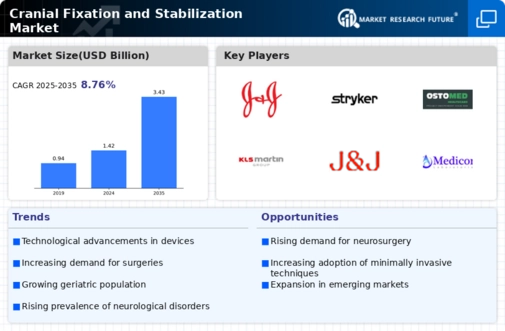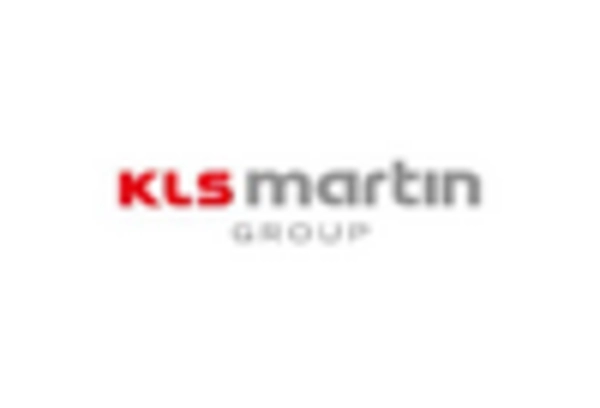Surge in Geriatric Population
The aging population is a prominent factor influencing the Cranial Fixation and Stabilization Market. As individuals age, they become more susceptible to various health issues, including neurological disorders that may require surgical intervention. The World Health Organization projects that the number of people aged 60 years and older will double by 2050, leading to a higher incidence of conditions necessitating cranial fixation. This demographic shift is likely to drive demand for cranial fixation devices, as healthcare providers focus on developing solutions tailored to the unique needs of older patients. The market is poised for growth as manufacturers innovate to create products that cater to this expanding segment.
Growing Incidence of Neurological Disorders
The prevalence of neurological disorders is a critical driver for the Cranial Fixation and Stabilization Market. Conditions such as traumatic brain injuries, tumors, and congenital malformations necessitate surgical interventions that often require cranial fixation devices. According to recent statistics, the incidence of traumatic brain injuries has been on the rise, with millions of cases reported annually. This growing patient population is likely to increase the demand for cranial fixation solutions, as healthcare providers seek effective methods to stabilize and support cranial structures during and after surgery. Consequently, the market is expected to expand significantly, as healthcare systems adapt to meet the needs of this increasing demographic.
Rising Awareness and Education on Cranial Health
The growing awareness and education surrounding cranial health are influencing the Cranial Fixation and Stabilization Market. Healthcare professionals and patients are increasingly informed about the importance of cranial stabilization in surgical procedures. Educational initiatives and campaigns aimed at promoting cranial health are contributing to a better understanding of the available treatment options. This heightened awareness is likely to lead to increased demand for cranial fixation devices, as patients and healthcare providers seek effective solutions for cranial stabilization. Consequently, the market may experience growth as more individuals recognize the significance of proper cranial fixation in achieving successful surgical outcomes.
Increasing Investment in Healthcare Infrastructure
Investment in healthcare infrastructure is a vital driver for the Cranial Fixation and Stabilization Market. Governments and private entities are increasingly allocating resources to enhance surgical facilities and improve access to advanced medical technologies. This trend is particularly evident in emerging economies, where the establishment of modern healthcare facilities is on the rise. Enhanced surgical infrastructure facilitates the adoption of advanced cranial fixation devices, as hospitals seek to provide high-quality care to patients. As a result, the market is likely to benefit from this influx of investment, which supports the development and distribution of innovative cranial fixation solutions.
Technological Innovations in Cranial Fixation Devices
The Cranial Fixation and Stabilization Market is experiencing a surge in technological innovations, particularly in the development of advanced fixation devices. These innovations include the introduction of bioresorbable materials and smart fixation systems that enhance surgical outcomes. For instance, the integration of 3D printing technology allows for customized cranial implants tailored to individual patient anatomy, thereby improving the precision of surgical interventions. As a result, the market is projected to witness a compound annual growth rate (CAGR) of approximately 7% over the next few years, driven by the increasing adoption of these cutting-edge technologies. Furthermore, the rise in research and development activities in this sector indicates a robust pipeline of innovative products that could reshape the landscape of cranial fixation solutions.

















Leave a Comment